Last Updated on January 8, 2023 by a Friendly Gardener
If you find carnivorous plants intriguing, the Butterwort plant is worth investigating. The Venus Fly Trap and Pitcher Plants may be considerably more well-known, but the predatory Butterwort plant will take care of any gnats in the vicinity.
This is a passive carnivorous plant when capturing insects. It does not move its foliage. It captures insects thanks to resin-coated leaves as they land on foliage.
Botanically named the Pinguicula, it belongs to the Lentibulariaceae family. Butterworts are miniature plants found underfoot in an ample zone of the Southeastern United States.
The Butterwort resembles an orchid as the flowers develop above the plant and can be found in shades of pink, white, blue, yellow, purple, and red. Plant foliage is yellowish green. The Butterwort’scarnivorous leaves form a rosette as they grow. It is stalkless. Flowers are five-petaled and are long-lasting. The plant will flower from May through July or approximately from spring to early summer.
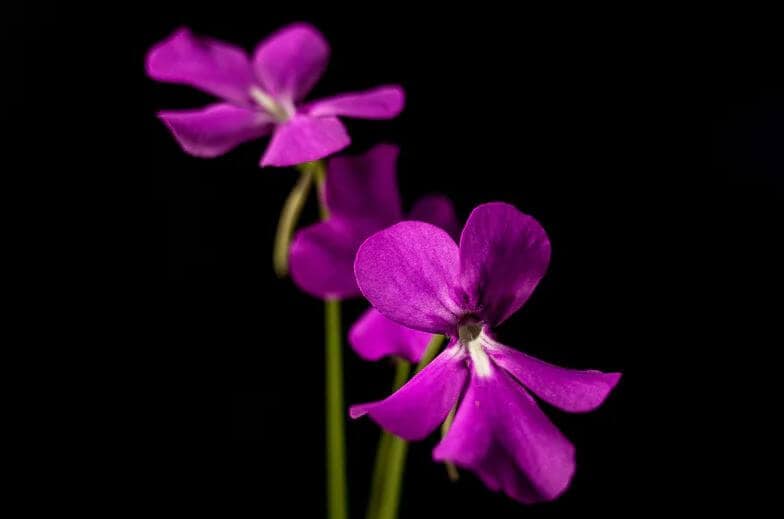
Plant foliage has a greasy resin. It is this resin that captures tiny insects with the Butterwort’s preference being gnats. The gnats or similar tiny bugs provide the Butterwort with nitrogen to meet nutritional needs. The bugs remain stuck to the foliage. During their struggle for freedom, the Butterwort releases a digestive enzyme so the plant can eat.
The Pinguiculagenus includes roughly 80 species. Approximately 13 are native to Europe and 9 are specifically native to the North American continent. Others will be found in northern Asia, with the remaining species growing in Central and South America.
Butterwort Plant Care
At its best, the Butterwort should be cultivated in areas that are characteristically warm with temperate climates. Several species are particularly adapted to cultivation in USDA hardiness zones 3 through 7. Other species will thrive in USDA hardy zones 10 and 1 and are perennials. Depending on the location where you cultivateButterworts, some species may behave as annuals. A Butterwort, unlike the Venus Flytrap or Pitcher plants, is not ideal for indoor cultivation unless you have a gnat problem.
Soil
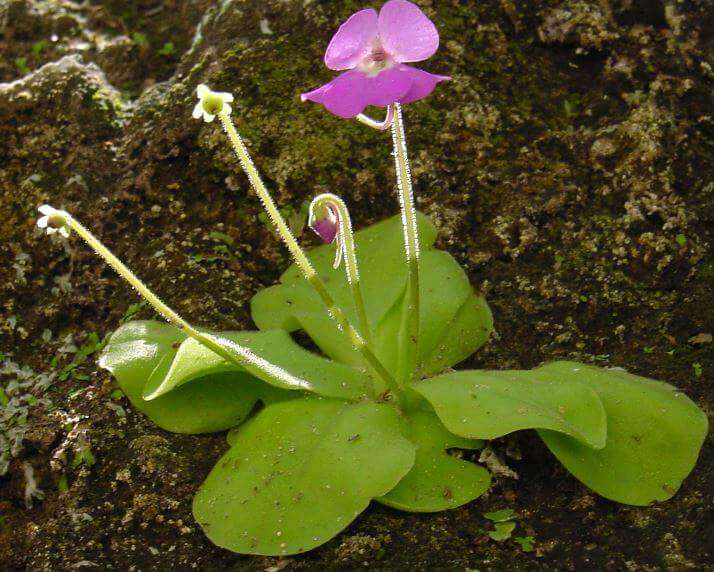
The Butterwort needs alkaline soil that is nutrient-poor. Soil should be boggy as in the plant’s natural habitat. It needs to be warm and moist. When cultivating plants outdoors, you can position Butterworts near water-like ponds as they need a moist soil bed. This should not be confused with wet soil as a wet soil bed can lead to root rot, killing your plants.
If you decide to attempt indoor cultivation, you can use one of several kinds of soil mixes:
- Combine peat moss in a 50/50 ratio with perlite or sand.
- Blend sand and sphagnum moss in equal parts. Sand can be substituted with vermiculite.
- Invent a mixture of rocks with live moss. Granite, perlite, limestone, or pumice works well when replicating a natural landscape for this plant. Place live moss on the rock bed you have created. Butterworts can grow right on rocks or on moss. When opting for this choice, place the container filled with rocks in the water. This will ensure that the moisture levels and humidity are adequate for your Butterwort plant.
- Prepare your plant’s container using an orchid soil mix of pumice, bark, and perlite in the bottom half. Fill the top half of the container with sphagnum moss. When using this growing medium blend, you can place the plant container in a water saucer or on a water tray permanently.
Light
Your Butterwort loves the full morning sun. However, it can thrive in an environment that has some sun combined with partial shade. The butterwort appreciates shade during the hotter hours. In indoor cultivation, east and west-facing windows are optimal choices.
Water
The water quality is essential in guaranteeing the survival of the Butterwort plant. Allowing the soil bed and the plant to dry out is also fatal.
A butterwort manifests mineral a sensitivity to salts. If possible, use collected rainwater. If this is not possible, opt for distilled water. Do not use tap water. Do not top water the Butterwort. This can lead to leaf rot. Water at the base of the plant directly.
With indoor cultivation, plant containers must have good drainage. This is true even if the soil bed must be constantly moistened.
Humidity
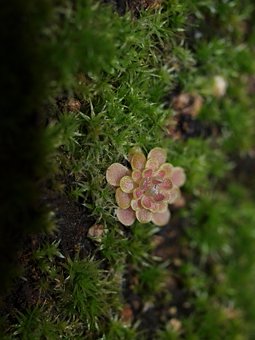
A Butterwort needs higher humidity levels than found in its natural habitat. If you are able to maintain the plant’s roots moist, the Butterwort can adapt to a lower humidity level without damaging your plant’s growth and health.
Temperature
The Butterwort does well in environmental temperatures that measure between 77° and 95° Fahrenheit during its growing season. During the plant’s dormancy, temperatures should measure between 50° and 65°F.
Feeding
The Butterwort does not need fertilization because it is a carnivorous plant. Fertilization may harm the plant.
Pruning
The butterwort does not require pruning. Remove plant offsets as you see fit.
Repotting
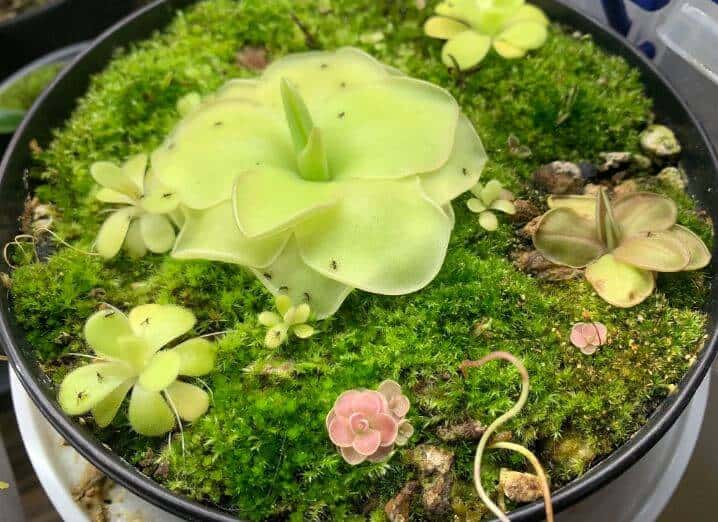
Watch outdoor plants for their growth rate. You can transplant outdoor plants annually or every other year if growth warrants it. Do so in March if necessary. Plan on transplanting indoor Butterworts annually.
Pests, Diseases, and Problems
Butterworts are not particularly at risk for pest infestations. This is because your Butterwort is a carnivorous species. Some carnivorous plants are utilized for pest control by growers.
Butterworts are resilient and not generally subject to disease nonetheless they can be susceptible to root rot if the soil does not drain well.
Butterwort Propagation
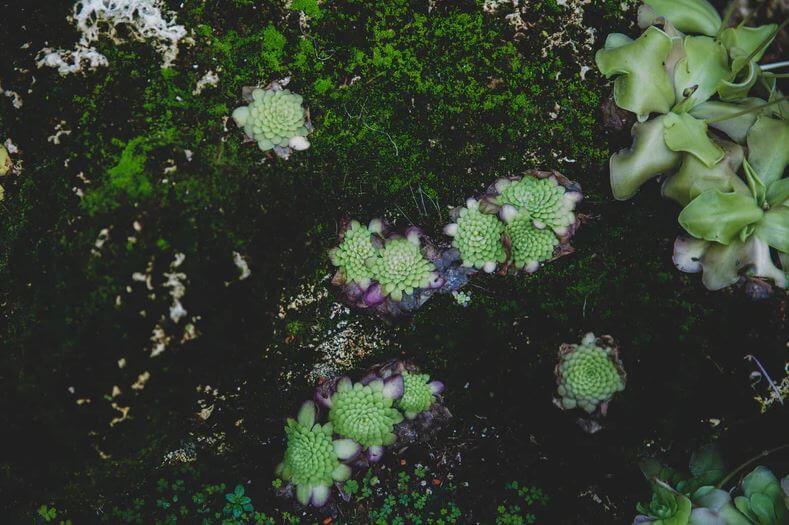
In nature, pollinators ensure Butterwort propagation, and the hummingbird plays the leading role. With cultivation, you can propagate Butterwortwithseeds, leaf cuttings, and plant division.
For seed propagation, sprinkle seeds on a moist soil bed in a pot or container. Do not bury them, but sew them on the top of the soil. Place them in a location with temperatures between 60° and 80°F and high humidity levels. Seeds should germinate in a few weeks Once new plantlets appear, transplant them into individual pots.
For leaf cutting propagation, remove an outside leaf at the plant base. Put the leaf in pure peat n a spot with high humidity levels until roots form. Ideally, do this during the plant’s winter dormancy.
Offset division can be used for propagation as well and should be in the winter during dormancy.
Butterwort Toxicity
Carnivorous plants are not a danger or known to be toxic to family pets or humans.
A Final Thought
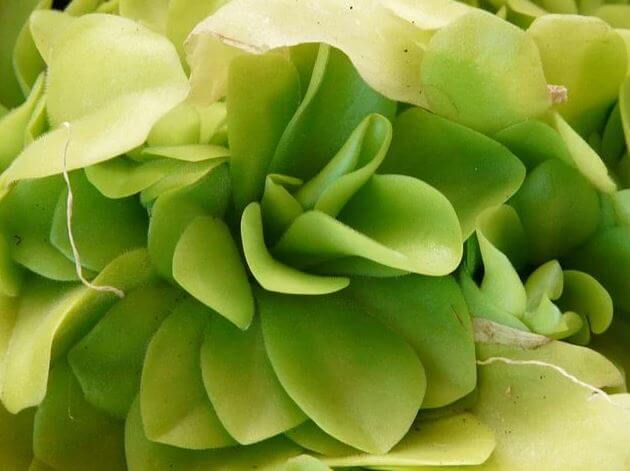
If you love flowers and prefer to be bug-free, consider a carnivorous plant. Carnivorous plants are a bit exotic and definitely intriguing. This is an easy-to-care-for plant that requires low maintenance needing light and water only. This makes the Butterwort the ideal carnivorous plant for beginners.

